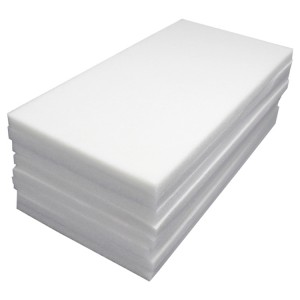Acoustic materials can be divided into sound-absorbing materials and sound-insulating materials according to their different functions. The main purpose of sound absorption is to solve the noise caused by the reflection of sound. The sound-absorbing material can attenuate the reflected energy of the incident sound source, so as to achieve the fidelity effect of the original sound source. Sound insulation mainly solves the transmission of sound and makes the main body feel noisy in the space. The sound insulation material can attenuate the transmitted energy of the incident sound source, so as to achieve the quiet state of the main space.
Environmentally friendly sound-absorbing cotton is a porous sound-absorbing material. The sound-absorbing mechanism is that there are a large number of tiny interconnected pores inside the material. Along these pores, sound waves can penetrate deep into the material and generate friction with the material to convert sound energy into heat energy. The sound absorption characteristics of porous sound absorbing materials are that the sound absorption coefficient gradually increases with the increase of frequency, which means that the low frequency absorption is not as good as the high frequency absorption. The necessary conditions for sound absorption of porous materials are: the material has a large number of voids, the voids are interconnected, and the pores penetrate deep into the material.
One of the misconceptions is that materials with rough surfaces have sound absorption properties, but they are not. The second misunderstanding is that materials with a large number of holes in the material, such as polystyrene, polyethylene, closed-cell polyurethane, etc., have good sound absorption properties. The internal vibration friction of the material, so the sound absorption coefficient is small.
Post time: Feb-23-2022





